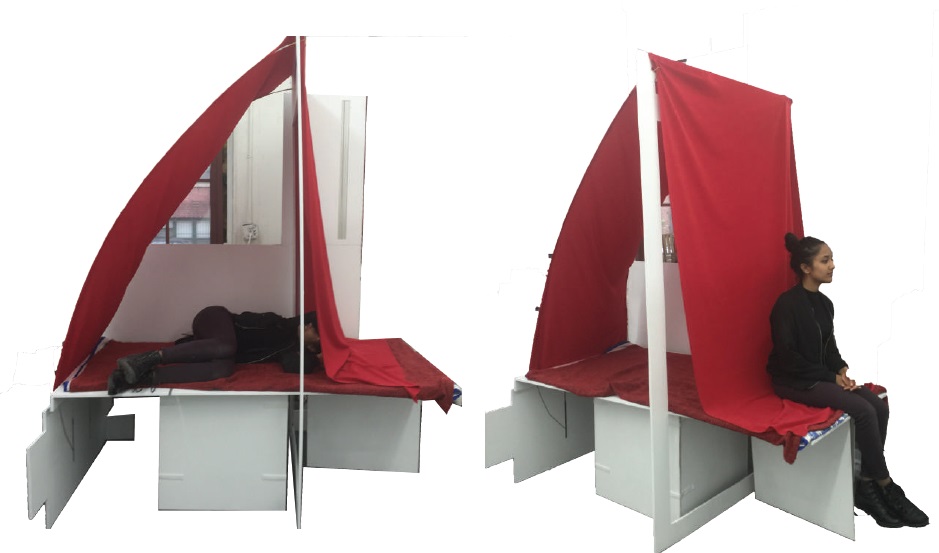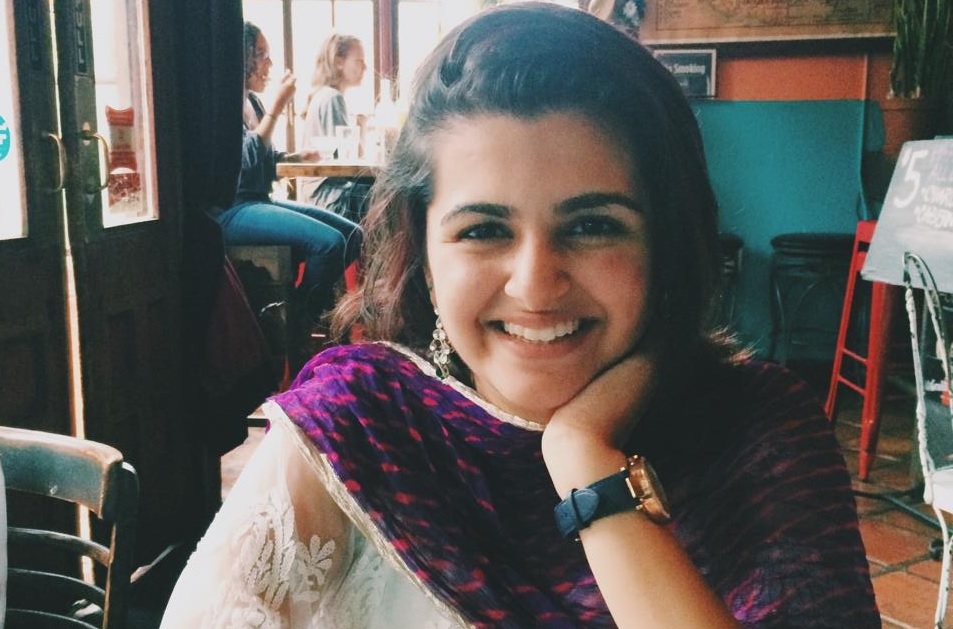
Lucknow-born Sanjana Paramhans’ shelter can be built in an hour, and house refugees for months.
A New York-based Indian interior designer has developed an emergency shelter for refugees that can be built in less than an hour and can house those that are waiting for permanent resettlement for months.
Sanjana Paramhans, who graduated from the Pratt Institute in Brooklyn, with a Bachelor of Fine Arts degree in interior designing, created the prototype while working on her undergrad thesis last year.
The shelter is made from fiberglass-reinforced gypsum, which makes it extremely light, while not compromising its structural stability. It can also be easily packaged and shipped.
Paramhans, who was born in Lucknow, India, said her design offers “a sanctuary for those who are temporarily displaced.”
“It is an emergency shelter, for refugees to settle in before the legalities take place,” she told The American Bazaar. “Although it is intended to last a few days, sometimes the refugee settlement processes can take months, leaving the refugees in extremely temporary dwellings. My idea was to design a shelter that will provide comfort to refugees while they wait for permanent resettlement.”
The shelter has a bed — which can also be converted into a chair — and a storage space. “To enforce permanency, I tried to pay attention to privacy, not only for the inhabitants, but also their goods,” said the interior designer, who now works for Smallbone of Devizes, a UK-based firm that does high end custom interiors.
Paramhans said she was “deeply affected by the situation and conditions of the refugees” and “really wanted to do something in my power” to help them out.
“I first thought of donating money, but I felt like I wanted to do more than that,” she said. “I wanted to use my knowledge and skills to design a solution that would be more permanent than simply donating money.”
Paramhans said the emergency shelter can be easily built by two people in less than an hour without using any electrical hardware.
The interior designer said she wanted to create a system that could be combined to create a community space. “While thinking of the concept I tried to keep in mind what would be most important for the refugees, which would be the sense of permanency in a temporary situation,” she said. “I also thought it was important to create a system that would be flexible for use, and to create a sense of community.”
When fully operational, the module looks like a house with an incorporated roof. It was designed in such a way that a number of permutations in terms of arrangement are possible, to accommodate individuals to a large family, Paramhans told The Bazaar.
Asked whether she intends to patent the invention, Paramahans said she hadn’t thought about it, “But I think it is the direction I want to head in, and seems like the next step.”

The interior designer said she is trying to find the right platform to make it available for refugees worldwide. “I would love to collaborate with an NGO and push this design forward, and try to reach it out to as many people in need as possible,” she said.
Deborah Scheniderman, Paramahans’ thesis adviser, said her student’s emergency shelter is an example for how design can be used as “an enabler of social change.”
“I think what is so great about this initiative is that Sanjana has shown us that, Innovation and Design can be used to solve some of the most trivial as well as life and death problems of the world,” Scheniderman, a professor of Interior Design in the School of Design at Pratt Institute, said via email. “Design stimulates people to behave a function a certain way — it can condition and control their actions and reactions. Design is not just pretty lights and wallpapers, it is an enabler of social change.”
Enabling social change is also what Paramahans wants to do long-term. She said: “In the future, I see myself as a working as a social designer, using design and design thinking as a tool to deal with economic and social challenges in the world.”
Paramahans came to the United States in 2012, to attend the Pratt Institute, after finishing her high school from The Indian School in Bahrain.
At Pratt, she made the president’s list honor roll twice and the dean’s list thrice. She was awarded a red tassel at graduation, for extraordinary cultural and extracurricular contribution to the school.
Paramahans was also a co-founder and president the South Asian Student Association at Pratt, which has more than 100 members.



